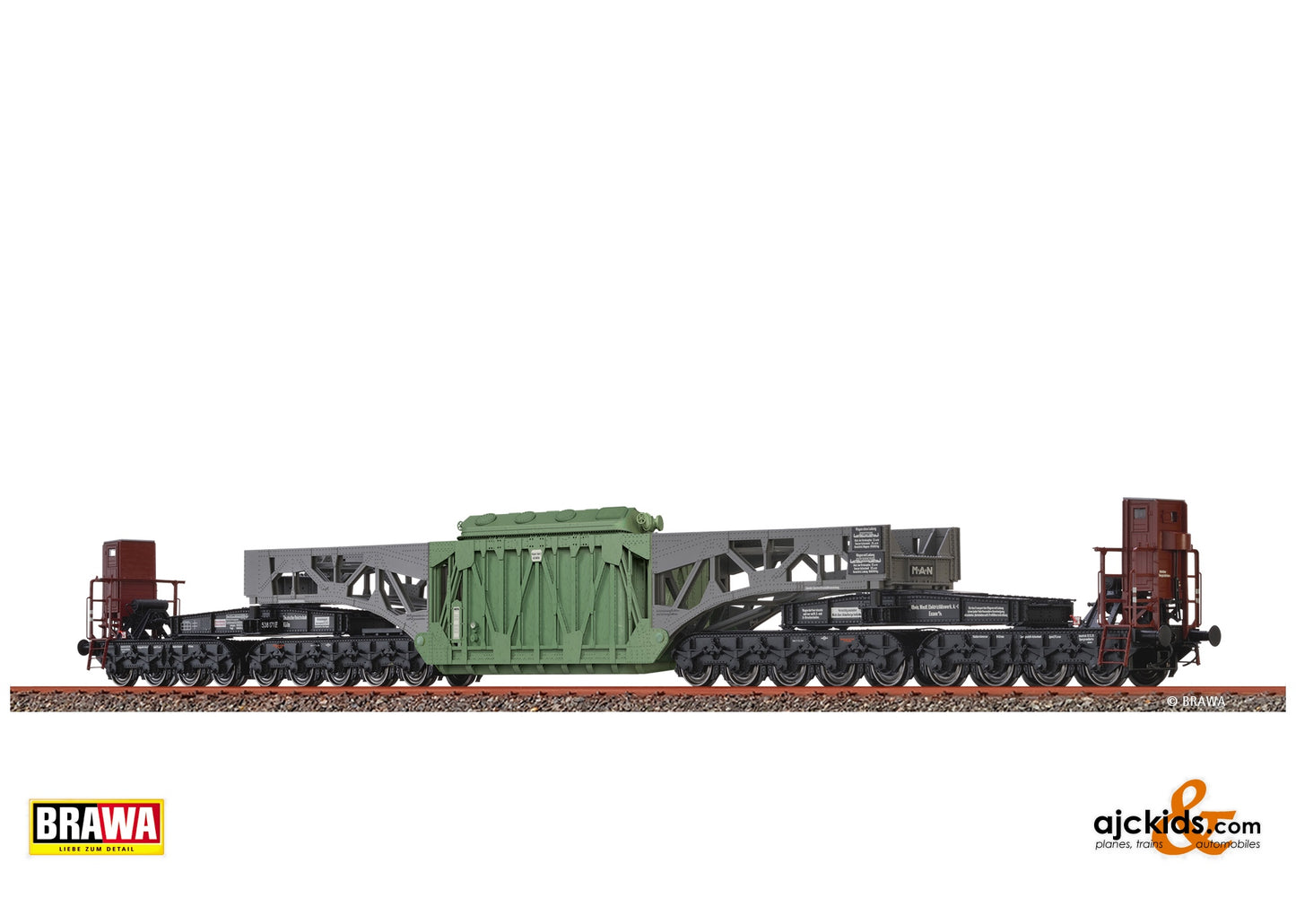Brawa 51273 - Special Freight Car SSt125 „RWE” DRG
Special Freight Car SSt125 „RWE” DRG
Road no.: Köln 538 171 [P]
MODEL DETAILS
- New transformer
- True to original construction differences
- Can be used with or without a transformer
- Four bogies with 18 axes
- Multi-part replica of the truss support frame
- NEM-standard short-coupling
- The trafo swings out very strongly in curves
- Navigable minimum radius: we recommend the use on R=420
- Detailed railing
- Metal wheels
- Individually mounted brake systems
- Detailed chassis
RWE is a registered trademark.
INFO ABOUT THE ORIGINAL
Large and heavy loads require special means of transport or wagons. In 1928, Rheinisch Westfälische Elektrizitätswerk A.-G. Essen (RWE) placed an order with Maschinenfabrik Augsburg Nürnberg (MAN) for the construction of two new heavy-transport vehicles. This was the only way to transport the constantly growing transformers for the electricity substations. These were added to Sketch 125 in the directory of wagons for exceptional transports in the Deutsche Reichsbahn’s rolling stock.
The maximum load capacity of the wagons was 168 tons, distributed over 18 axles. One four-axle and one five-axle bogie each carried a bridge, on which a support frame was mounted. The support frames featured the characteristic riveted truss construction. Unloaded, the two support frames were coupled with bolts, so that even when empty the heavy-transport wagons reached a length of 27.525 m over buffers. The wagon’s dead weight was 97.2 t. For loading, the two halves were pulled apart and a self-supporting transformer or an 8.40 m-long lattice framework was suspended between the support frames.
As private vehicles ([P]-cars), the carriages were initially employed by the German Imperial Railway (Company) and later by the Federal Railway, and were initially home-based at Cologne Kendenich railway station operated by the K.B.E. Two additional SSt 125s were also built by MAN in 1940 and belonged to PreussenElektra Hanover and Elektrowerke A.-G. Berlin. The latter remained with the National Railway in the Soviet zone after the war and later joined the East-German Deutsche Reichsbahn.
Due to the dimensions of the special cargo, which often exceeded the perimeter of the vehicle, the wagons were only permitted to travel at a maximum speed of 40 km/h when loaded as exceptional transports. And on narrow bridges, this was further reduced to walking speed while under observation. For this reason, such journeys were mainly carried out in the early morning or late evening.
Unloaded, the wagons could be transported by regular goods trains, albeit only at 65 km/h, which was the standard maximum speed for regular goods trains at that time. At DB, the maximum speed was increased to 80 km/h when roller bearings were installed.
The carriage 84 80 995 8 001-3, last based at Dortmund central railway station, was handed over by RWE Rhein-Ruhr Netzservice GmbH to Bahnwelt Darmstadt Kranichstein as a museum exhibit in 2011. The BRAWA models show the epoch-relevant differences in construction details of the heavy duty freight cars and has many attached details. Numerous details such as e.g. replica of the truss support frame as multi-part construction ensure that the reproduction is true to original.
EAN/UPC: 4012278512730



